
|   |

|   |
Centenary event in memory of Guru Vedantam Raghavayya - Dr. Anupama Kylash e-mail: anupamakylash@gmail.com Photos courtesy: Katyayani Ganti January 9, 2020 Kuchipudi, as a form, has passed through many phases of change and reinvention in its varied performing formats, beginning with the Kalapam, Yakshagana, solo tradition and the balletic format or Nrtuya Natika making it a highly malleable and adaptable grammar of body movement and histrionic representation. Many an eminent practitioner and teacher from the village of Kuchipudi in Krishna district of Andhra Pradesh, made their way to the then Madras Presidency, to expand their horizons and explore their art further through the very powerful medium of cinema. We have heard of many of them like Pasumarthy Krishnamurthy, Vempati Peda Satyam, Vempati Chinna Satyam and the lesser known Vedantam Raghavayya. Hailing from the illustrious family of Vedantams, one among the Kuchipudi greats, like Vedantam Lakshminarayana Sastry, Vedantam Jagannatha Sharma, Vedantam Rathaiah Sharma and the celebrated Vedantam Satyanarayana Sharma, it is only right, therefore, that the Kuchipudi fraternity thought it appropriate to commemorate and celebrate the centenary year of the veteran, Vedantam Raghavayya. 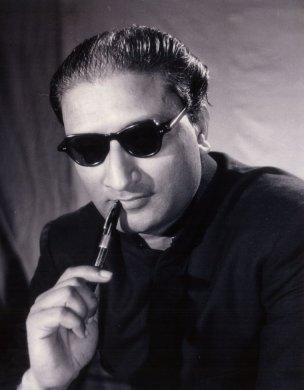
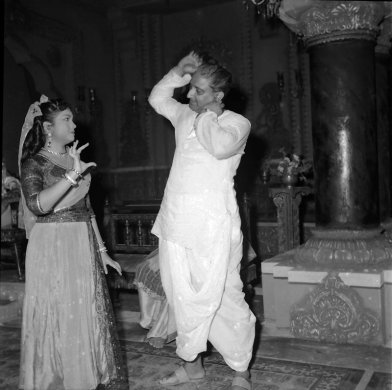
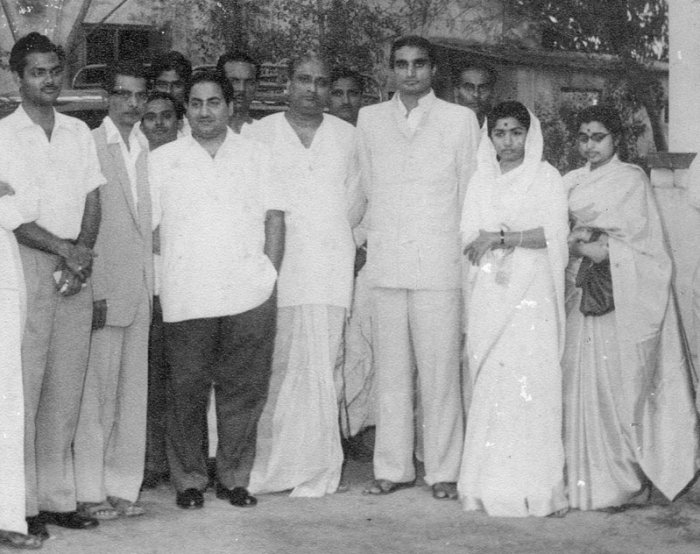 Suvarna Sundari Triggered off by a special feature in ETV, the idea took hold in the mind of Dr. Anuradha Jonnalagadda (Tadakamalla), senior practitioner and academic, Professor at the University of Hyderabad, and crystallized into the comprehensive and well thought out presentation staged on the 22nd of December at Ravindra Bharathi auditorium in Hyderabad. Jointly organized by Art India Foundation started by Dr. Anuradha, Lasyakalpa, an organization jointly created by popular musician and composer D.S.V. Sastry and Katyayani Ganti, Kuchipudi practitioner and academic, Bhagavathamelam Kuchipudi led by Dr. Tadepally, and supported ably by the Department of Language and Culture, Govt. of Telangana, the event commenced with a galaxy of eminent dignitaries addressing a packed house, which was in itself, a very encouraging sight, for this is rare for events connected to Fine Arts and Performing Arts, in most cities today. V. Srinivas Goud, Minister of Culture, Govt. of Telangana, addressed the gathering first, commending the immense effort and dedication of Dr. Anuradha and her team for making this endeavor a reality. This was followed by a hallmark release of a postal cover in the name of Vedantam Raghavayya by Sandhya Rani, Chief Postmaster General. This was a laudable contribution. After this were interesting reminiscences by two stalwarts from the field of Telugu cinema, veteran actress Jamuna Ramana Rao and singer S.P. Balasubrahmanyam. While their recollections and observations were absorbing and took the audience back to the era of black and white cinema, they were a tad too long and ate into the timeline of the upcoming presentations. 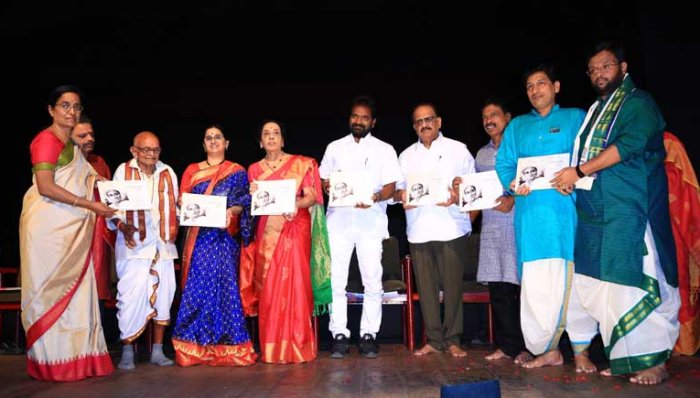 The visual showcase began with a well compiled promo focusing on Vedantam Raghavayya, which was put together and edited by D.S.V. Sastry and Katyayani. The intent of the promo was to reclaim the heritage of Vedantam Raghavayya and reinstate his position in the popular history of Kuchipudi. The set of 11 compilations that followed the promo, were brilliantly culled and presented by Katyayani. Substantial background work done by her for her doctoral thesis on the Kuchipudi contribution to Telugu cinema guided by Dr. Anuradha, infused the presentation with archival inputs, factual information and studied observation. The presentation started with a clip from the 1939 film 'Raitu Bidda' in which we see Vedantam Raghavayya himself performing the popular 'Dashavatara Shabdam' from the Kuchipudi repertoire. It brought to life some interesting mudra combinations which are not very visible in the choreographies of today. This was followed by a humourous sequence where Vedantam Raghavayya, as a guru, is teaching a Kshetrayya padam "Innallavale kaaduraa" to a female dancer. The importance given to the word to word delineation or 'padartha' in the padams of yesteryears was clearly evident here. This was followed by a clip from the Mohini Rukmangada Yakshaganam from the 1945 film 'Swargaseema.' We can hear the typical Kuchipudi Yakshaganam bani or style in this piece, using metrical forms like the Kanda Padyam transporting to the performative structure of Kandartham, and a mnemonic scheme, very unique to the Kuchipudi format. The next clip was an endearing extract from the 1946 film 'Thyagayya' based on Thyagaraja Swamy's life. The little children dancing to "Madhura nagari lo" was a walk down memory lane, once again bringing to mind, the legend that Saint Thyagaraja forsook the Ananda Bhairavi raga, after hearing it peerlessly rendered by the Kuchipudi Bhagavathas. 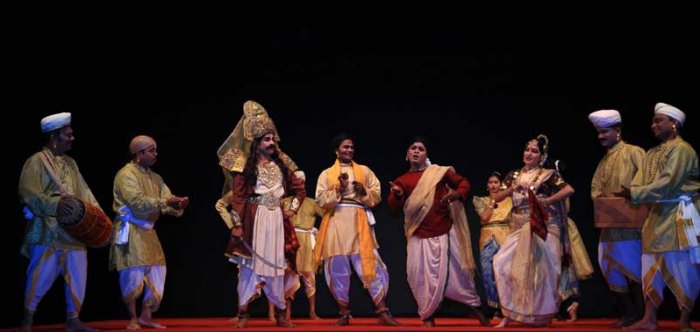 The next piece was a recreation of the song "Aaparanitaapamayera" from the 1947 film 'Yogi Vemana'. This was danced by Bharatanatyam dancer and actress Ashrita Vemuganti. Watching the piece being performed in the same flavor as in the film, brought to mind the historical and socio cultural aspects of the times when major parts of Southern and Eastern India were under the rule of the Telugu kings, be they the Nayakas of Thanjavur or Vijayanagara kings of Hampi, Gajapatis of Orissa and parts of Kalinga under the Telugu rulers. There was bound to be a give and take amongst the various artistic traditions prevalent during the times, whether they were the female dance traditions of the Telugu hereditary temple and court dancers, or the male predominant Bhagavatha traditions. I say this because, we find much synthesis of all these different movement sets, which we today identify from regional representations, like Bharatanatyam, Kuchipudi, Odissi, Mohiniattam, only reiterating the fact that major parts of Southern India may have shared a common corpus or 'Bharatam' influenced by indigenous dancing traditions and textual works. Two young dancers from the University of Hyderabad, Vaishnavi and Anusha, reproduced a court dance from the 1949 film 'Laila Majnu', which followed the pattern of Oriental movement, much in vogue during those times. As Katyayani mentions in her commentary, it was impossible for any dancer or teacher who walked the roads of Madras in the 1940's, to not be influenced by the Oriental dances of Uday Shankar, and this influence is clearly visible in some of the choreographies of Vedantam Raghavayya, as was evident in the above mentioned song from 'Laila Majnu', and the song recreated by a group of Kuchipudi dancers, students of dancer and academic Himabindu Kanoj led by lead dancer Ujjwala, "Ohoho Maharaja" from the 1950 film 'Swapna Sundari.' The coordination and artistry of the dancers recreating this piece, is worthy of special mention. 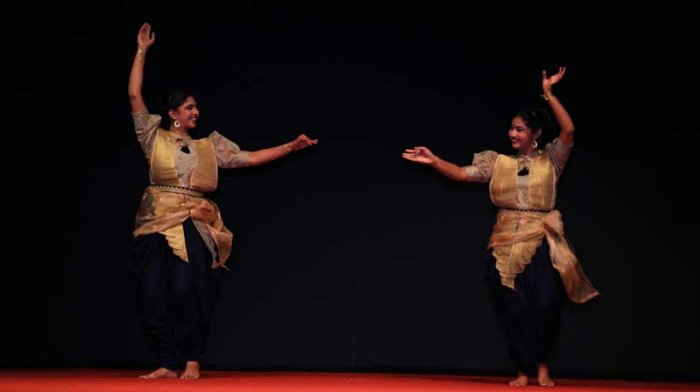 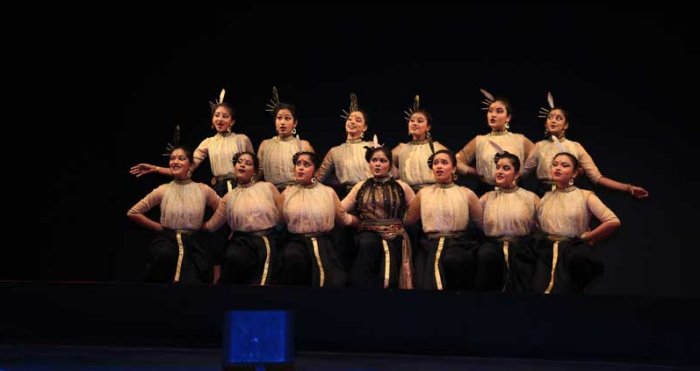 Another noteworthy recreation was the extract from a Yakshaganam segment from the 1951 film, 'Mayalamari'. While Aparna of HCU recreated the role of Anjali Devi, young dancer Voggu Praveen recreated Akkineni Nageswara Rao's role. They were ably supported by Seenayya and Shiva in the roles of the Sutradhara characters, Madhavi and Madhava. The hilarious episode was flawlessly enacted, keeping in mind the costuming and aesthetics of the time. Two dances from the film 'Sri Lakshmamma Katha' in which Suryaprabha danced were included in this presentation. These are of special value, as it was Raghavayya choreographing dances for Suryaprabha, who happens to be his wife. The showcase ended with the iconic clip of Girijakalyanam Yakshaganam from the 1967 film 'Rahasyam' in which the celebrated exponent of Kuchipudi, Vedantam Satyanarayana was seen essaying the role of Manmatha. The entire visual showcase was carried off without a single glitch indicating admirable planning and preparedness on the part of the organizers. The publication on Vedantam Raghavayya which contains all the 90 odd pictures collected, as well as articles on Vedantam Raghavayya's life and works, is available for purchase. It stands as a historical treasure trove, as it contains a wide array of information, including the old article published in the 'Vijaya Chitra magazine' written by Vedantam Raghavayya himself titled "Naa Toli Cinema Parichayam." These 90 photographs were also put together as an exhibition from 20th to 22nd of December in the foyer of Ravindra Bharathi, for art lovers to see. 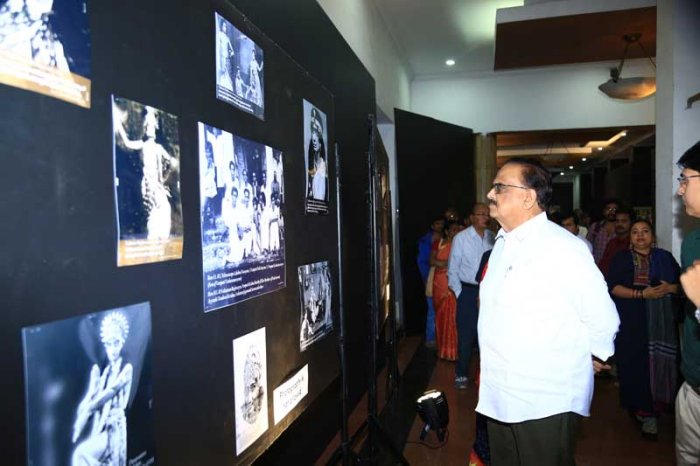 Exhibition The endeavor made by Dr. Anuradha, Katyayani Ganti, D.S.V. Sastry and a large team supporting them, comes at a very opportune time, when the dance fraternity is beginning to comprehend the need to merge theory with practice, sift history from legend and review the content of a performance. This happy marriage is a most welcome phenomenon indeed! Dr. Anupama Kylash is a senior practitioner of Kuchipudi and Vilasini Natyam, and an academic. She is presently Faculty for the Dept of Kuchipudi, University of Silicon Andhra, California. |